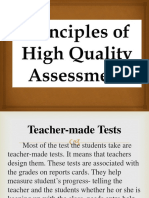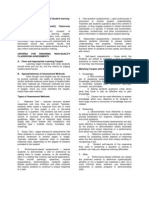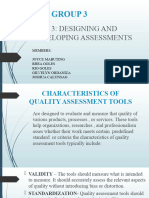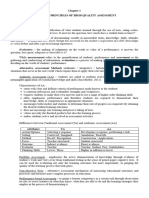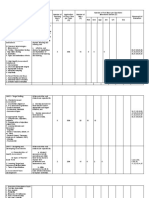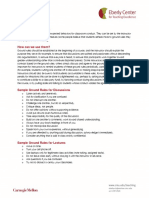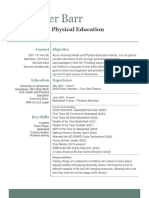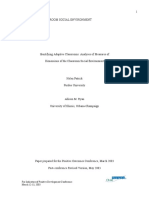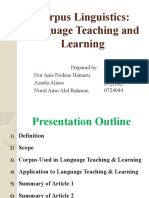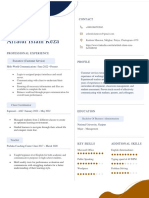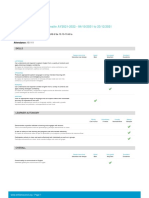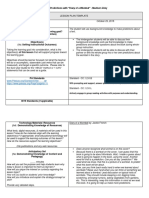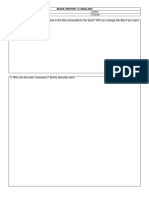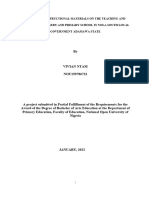0% found this document useful (0 votes)
7 views4 pagesFinal Notes Midtern Prof Ed 5
The document outlines the planning and characteristics of written tests, emphasizing the importance of validity, reliability, fairness, and clarity in assessment tools. It discusses various types of objective tests, learning targets, and the Table of Specifications (TOS) as a framework for test design. Additionally, it categorizes types of assessments and their purposes, highlighting the need for comprehensive and authentic evaluation methods.
Uploaded by
jabolkrisann0Copyright
© © All Rights Reserved
We take content rights seriously. If you suspect this is your content, claim it here.
Available Formats
Download as DOCX, PDF, TXT or read online on Scribd
0% found this document useful (0 votes)
7 views4 pagesFinal Notes Midtern Prof Ed 5
The document outlines the planning and characteristics of written tests, emphasizing the importance of validity, reliability, fairness, and clarity in assessment tools. It discusses various types of objective tests, learning targets, and the Table of Specifications (TOS) as a framework for test design. Additionally, it categorizes types of assessments and their purposes, highlighting the need for comprehensive and authentic evaluation methods.
Uploaded by
jabolkrisann0Copyright
© © All Rights Reserved
We take content rights seriously. If you suspect this is your content, claim it here.
Available Formats
Download as DOCX, PDF, TXT or read online on Scribd
/ 4


















